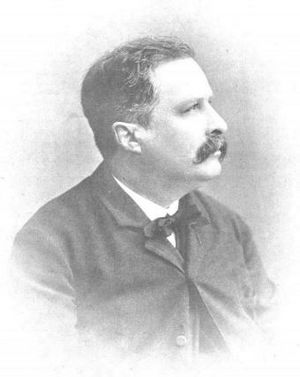Agapit Vallmitjana i Barbany facts for kids
Quick facts for kids
Agapit Vallmitjana i Barbany
|
|
|---|---|
 |
|
| Born |
Agapit Vallmitjana i Barbany
24 March 1832 |
| Died | 25 November 1905 (aged 73) |
| Nationality | Spanish |
| Known for | Sculpture |
| Movement | Realism |

Agapit Vallmitjana i Barbany (born March 24, 1832, in Barcelona – died November 25, 1905, in Barcelona) was a famous Spanish sculptor. He worked in the Realist style, which means his art looked very true to life. His brother, Venanci, was also a sculptor. They often worked on projects together.
Contents
Biography
Early Life and Art School
Agapit's father, Felip Vallmitjana, worked as a weaver. When Agapit and his brother finished their daily work, they loved to create small figures. They made things like manger scenes and masks for carnival. Their father showed their amazing work to some local artists. Two of these artists, Pau Xacó (a sculptor) and Sebastià Gallès i Pujal (a painter), told them they should go to art school.
Agapit started classes at the Escola de la Llotja in 1849. While his brother Venanci focused mainly on sculpture, Agapit also studied other subjects. He learned about anatomy, art theory, and art history. Both brothers were taught by a very famous sculptor named Damià Campeny. Campeny's style influenced them a lot. However, after they graduated, they started to develop their own unique style, moving away from his older, classical way of sculpting.
Working Together and Gaining Fame
After finishing school, Agapit and Venanci opened their own workshop in Barcelona. They created many sculptures for public places, like parks and squares. Their work was so good that they were even made Knights in the Order of Isabella the Catholic. This was a special honor.
Later, they received a big job to create art for the University of Barcelona. Because of this large project, they moved their studio closer to the university. During these years, they also showed their art in big exhibitions around the world. They even won a major award at the 1873 Vienna World's Fair. In 1877, they were chosen to be members of the Real Academia de Bellas Artes de San Fernando, a very important art academy.
Teaching and Mentoring
From 1876 to 1880, Agapit was a temporary professor of sculpture at the Escola de la Llotja. Then, in 1881, he became a full-time professor by royal order. He taught there until he passed away. Eventually, in 1883, the brothers decided to open their own separate studios.
Agapit and Venanci always welcomed young students into their workshop. Some of their first students included Jeronimo Suñol and Rossend Nobas. Later, they also mentored artists like Joan Flotats i Llucià and Rafael Atché. Venanci's son, Agapit Vallmitjana i Abarca, also learned from them.
Besides teaching at the Escola, Agapit was also a member of the Reial Acadèmia Catalana de Belles Arts de Sant Jordi. As a teacher, he guided many well-known sculptors. One of his most famous students was Pablo Gargallo, who became a leading artist in the Modernist style. In his later years, Agapit continued to create sculptures for public spaces. He was also very popular for his statues found in cemeteries and for his portrait sculptures.
Works
- Jaume I, a monument in Valencia.
See also
 In Spanish: Agapito Vallmitjana para niños
In Spanish: Agapito Vallmitjana para niños


